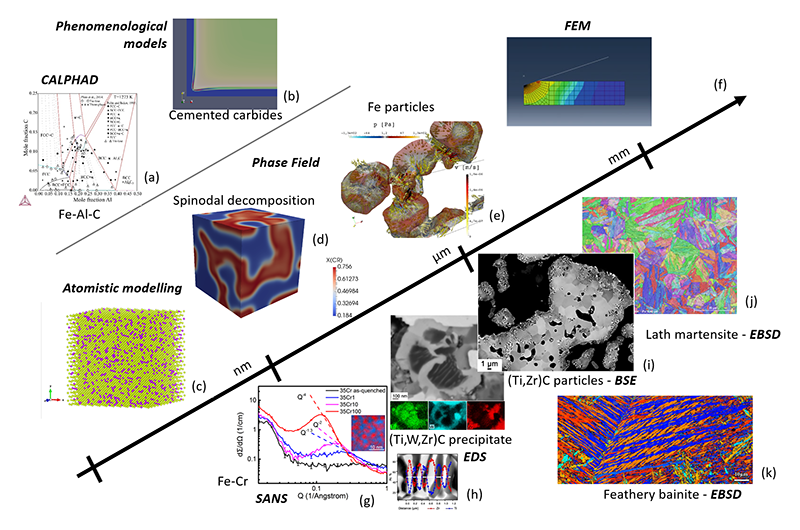Unit of Structures
The research activities at the unit of Structures are both experimental and calculational, and focus on characterizing the structure of materials. Thermodynamic and kinetic modelling of materials are major tools in materials design.

The research activities focus on characterizing the structure of materials and how it evolves by different type of phase transformations. Different scales of length and time, ranging from electronic structure to engineering components, from atomic vibrations to component life-time, are considered. The approach is both experimental and calculational. In particular the thermodynamic and kinetic modelling of materials are major tools in materials design. The approach may be summarized as materials by design using ICME (Integrated Computational Materials Engineering).
The materials of interest are inorganic, heterogeneous, multicomponent, and multiphase such as metallic alloys, cemented carbides, ceramic materials, metallic glass, high entropy alloys and functional materials.
Key research areas
- Ab initio and atomistic modelling
- Computational Thermodynamic (Calphad)
- Phase transformations and structure evolution: Kinetic modelling
- Nanotechnology, additive fabrication and nanoelectronics
- Experimental techniques and characterization
Head of Unit
Materials by design using ICME (image above)
(a) Isothermal section of a ternary phase diagram – (b) 2D simulation of gradient sintering in cemented carbides – (c) Atomic scale modelling – (d) Spinodal decomposition in Fe-Cr – (e) Sintering of Fe particles – (f) Finite element modelling of nanoindentation – (g) Spinodal decomposition of bcc/bct phases forms periodic nanostructures in Fe-Cr alloys – (h) EDS element map of (Ti,W,Zr)C precipitate on a (Ti,Zr)C particle during sintering and EDS line through a lamellar nano-structure in (Ti,Zr)C particles – (i) Backscattered electron microscopy of decomposition structure in (Ti,Zr)C particles – (j) Stainless steel. The microstructure is lath martensite with its substructures (packet, block and sub-block). The color means different orientation. From this results, we could know the sizes and morphology of prior austenite grain, martensitic packet, block and the orientation relationship between them, etc. – (k) EBSD misorientation map, feathery bainite (in blue) in an Fe-0.7C alloy held for 60 s at 573 K (300 °C). Another variant of bainite units (in orange) has formed subsequently which almost fill all the interspaces of the semi-feather to the right side of the grain boundary.
Weisen Zheng - Armin Salmasi - Pjotrs Zguns - Thomas Barkar - Efim Borukhovich - David Linder - Xin Xu - Taoran Ma - Tao Zhou - Jiaqing Yin.
